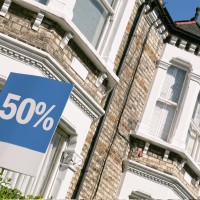
There has also been a near doubling in the number of high value properties seeing prices cut in the first half of the year compared to last year.
According to data from Savills, prime property prices in London and its suburbs fell by around 1% in the third quarter of 2017 meaning prices have fallen by 3.2% in central London and 2.1% in the rest of the capital this year.
However, other areas around the UK saw slight price rises in Q3 and as a result have witnessed property price rises of between 1.3% and 2.2% so far in 2017.
Permanent shift
In its analysis, Savills noted that house prices in London’s prime central locations were beginning to level-off as the rate of falls slowed again, but uncertainty over the impact of Brexit pointed to two further years of no growth.
It expects prime values to rise 20% in central London and 10% in the rest of London over the next five years, largely beginning in 2020, but said this represented a permanent shift away from a much more rapid historical trend.
Outside the capital, but including suburban and commuter areas, Savills expects prime prices to rise by between 12% and 15% by 2022, again largely growing from 2020.
The difference in these trends was highlighted by a 90% increase in the number of properties marketed at £1m+ which saw an asking price cut. In the first half of 2017 the asking price was cut on 10,604 properties marketed at £1m+, compared with 5,585 in the first half of 2016.
This trend was mostly focused in London, where there were 122 price reductions for every 100 London properties sold for more than £1m compared to 76 price reductions for every 100 £1m+ properties across the rest of the UK.
Overseas taxes take effect
Savills head of world research Yolande Barnes noted that the higher costs now associated with buying a high value home and the greater exposure to capital gains tax and inheritance tax for overseas owners would continue to moderate price growth regardless of the Brexit outcome.
“But we think the risks regarding London’s position as a global commercial centre have been overplayed,” she said.
“Whatever the challenge from other cities, London will almost certainly remain a key global financial centre and develop as one of several European hubs for the growing tech sector. Its prime markets will therefore benefit from new domestic wealth generation as well as attracting wealthy international buyers.”
Beyond London
The estate agent also reported that beyond London, average prime regional values seemed to have leveled off and some will see marginal price growth next year.
It said the flow of wealth out of the UK capital played significant role in forecasts for the prime commuter zone, which will be slower to see price growth.
“But over a five-year period, as London ticks up, these markets will likely be the strongest regional performers, with growth peaking at 15.3% in the outer commuter zone, some 30-60 minutes outside the capital,” it added.
Further from London, much depends on more general economic drivers and the extent to which they support a wider ripple effect.
“The wider south of England, Midlands, North of England and Scotland have all seen small average price increases this year and that will continue into 2018.
“All will undershoot London’s commuter belt over the five-year period, but see marginally stronger growth than outer prime London, suggesting that the value gap is stretched to its maximum,” Savills added.















